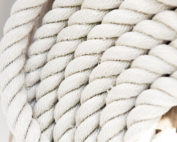Basic requirements concerning titanium dioxide pigments (titanium white) are standardised. The most often applied standard is the ISO 591 international standard. On certain markets, however, national standards are of greater significance: ASTM D476, or GOST 9808.
Methods of assessment of particular parameters of titanium dioxide are contained in the ISO 787 set of standards.
TYTANPOL® pigments are manufactured according to the ZN-ZCh-435:2016 internal standard, in accordance with the ISO 591 standard.
Technical standards provide only basic requirements and do not fully meet requirements resulting from the specification of a particular pigment application or individual recipient’s expectations. In such cases, requirements are determined through arrangements between a recipient and a pigment manufacturer.
Apart from standards directly concerning titanium dioxide, a series of standards specifying requirements for pigments is applied, in force in particular applications. The examples of such standards are EN 71-3:1994 or ASTM F963-03 referring to safety of toys.
KNOWLEDGE BASE
TITANIUM DIOXIDE – application
Titanium dioxide, known as titanium white, is the most important and most widespread inorganic pigment. It is used in a wide range of products we use every day, giving them appropriate apperance: the color, opacity [...]
Where to find TiO2 in daily life?
Titanium dioxide, also known as TiO2, is one of the most common pigments and is used as a basis for all colours, to give the brightness to paints, printing inks, paper, plastic products, foods, cosmetics, [...]


